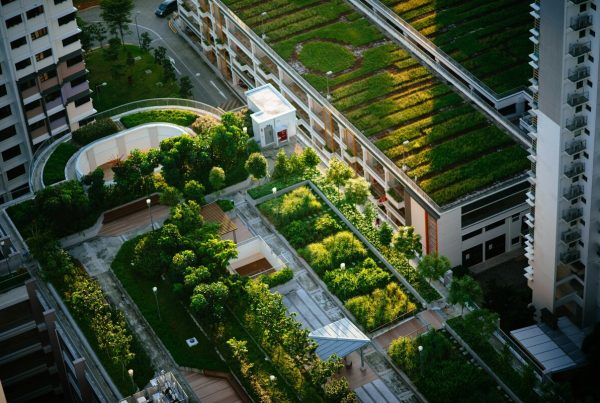There’s a new LEED Pilot Credit in town, and it involves gardening.
Yes, gardening. But more specifically, gardens that produce food. Under LEED SSpc82 Local Food Production, projects can now avail of additional LEED points when they commit to maintaining an onsite garden that grows and produces food.
USGBC is clear on LEED SSpc82’s intent: [To] improve human health and well-being, community involvement, and education on food production by designing and maintaining the site for food production.
And it’s about time. After all, thousands of dollars are spent on landscaping for both commercial and residential buildings. IBISWorld reports that despite economic slumps there was a $71bn revenue of the landscaping services industry for this year. This just goes to say that we take our gardens seriously. If we can do that for ornamental gardens, why not for gardens that actually bear food?
The pilot credit has specific requirements for total percentage of space devoted to the food garden, as follows:
For Building Design + Construction (BD + C)/ Interior Design + Construction (ID + C):
At least 10{e3829ec1db02d54faaf9fa2de0d48db26af01d7a7944a63c3b26976124791cab} of the site’s vegetated area
At least 1,500 square feet of hydroponic area
At least 50{e3829ec1db02d54faaf9fa2de0d48db26af01d7a7944a63c3b26976124791cab} of usable roof top space (excluding mechanical equipment, etc.)
At least 3,000 cubic feet of vertical farming or vertically stacked agriculture (length x width x height)
At least one square foot per Full Time Equivalent (excluding visitors)
For Schools Projects:
500 square feet in facility of less than 500 students
1,000 square feet in facility of 500 – 1,000 students
1,500 square feet in facility of over 1,000 students
A three-year commitment to the project is needed for documentation. Other details of LEED pilot credit SSpc82 can be found here.
Making Gardens Edible with LEED Pilot Credit
Landscaped gardens with lush bushes, ornamental trees, and well-manicured lawn aren’t that bad to begin with. They provide shade, oxygen, and good storm water management, encourage a healthy ecosystem, and perhaps, best of all, a relaxed, stress-relieving ambiance for building occupants and guests. When all that space is devoted to gardens which are only there mostly for aesthetic reasons however, we miss out on one good thing: food.
Earlier, we featured the remarkable crusade of one town in England, Todmorden, to transform their landscape into gardens that bear food. The project led by Pamela Warhurst is appropriately dubbed Incredible Edible. Everyone is involved, even kids, which gives them a renewed appreciation for the food they eat. And they weren’t even gunning for points under a LEED Pilot Credit.
Maintaining food gardens in commercial buildings aren’t a new thing anymore. Many hotels have installed their very own rooftop vegetable and herb gardens to provide the produce for their restaurant dishes. Supermarkets and malls are also in on the trend too. As the world’s population grows and food supply tries to catch up with it, local food production is becoming all the more important.











